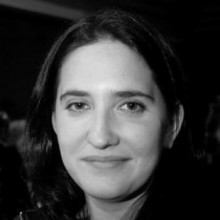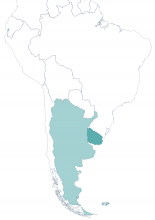María Macarena was born in Montevideo (Uruguay) in 1976, probably on 1st November.
Macarena's mother, the Argentine María Claudia García Iruretagoyena, was captured while pregnant, along with her husband, Marcelo Gelman, on 24th August 1976. Six heavily armed men from the Argentine Primer Cuerpo de Ejército (First Army Corps) broke into their Buenos Aires home in the early morning. They kidnapped Macarena's parents, along with Marcelo's sister, Nora, and a family friend.
The four of them were carried to the clandestine detention and torture centre known as Automotores Orletti, located in Buenos Aires' Floresta district. Nora and the family friend were released a few days later. Whereas Marcelo was detained until he was assassinated and disappeared at the end of September or the beginning of October 1976.
María Claudia was transferred to Montevideo, possibly in a Uruguayan Air Force flight, on around 6th or 7th October 1976. She was then held at the clandestine torture and detention centre that functioned as the Uruguayan Servicio de Información de Defensa (Defence Information Service, SID) headquarters on Bulevar Artigas Avenue in the heart of Montevideo.
At the end of October or beginning of November, María Claudia must have been transferred to the Military Hospital where her daughter, Macarena, was born. Soon after the birth, María Claudia was returned to the SID together with the newborn. She was detained in a separate ground-floor room away from the other prisoners who were held in the basement. Between November and the beginning of December 1976, the prisoners detained at Automotores Orletti were transferred to different destinations. On 22nd November, María Claudia and her daughter were taken to another secret prison in Montevideo known as 'Base Valparaíso'.
At the end of December 1976, the young Macarena was separated from her mother. On 14th January 1977, she was taken to the home where the Uruguayan police commissioner, Ángel Tauriño, lived with his wife. The couple registered the newborn as their biological daughter under the name 'María Macarena'.
In Buenos Aires, María Claudia's mother, María Eugenia Cassinelli, and Marcelo's mother, Berta Schubaroff, began the search for their unknown grandchild. María Eugenia signed one of the first collective habeas corpora directed at the Argentine dictatorship, together with twelve wives, mothers, and grandmothers of disappeared people. They filed the habeas corpus on 15th May 1977 at the Judicial Department of Morón, Buenos Aires Province.
The grandparents spent the following years searching for Macarena, running international campaigns and mounting legal processes which faced particular resistance under the Uruguayan governments of President Julio María Sanguinetti (from 1985 to 1990 and 1995 to 2000). In January 2000, Macarena learned about her true identity through Bishop Pablo Galimberti, who was the intermediatory between the biological and adoptive families. On 31st March 2000, the twenty-three-year-old woman was introduced to her paternal grandfather, the renowned Argentine poet, Juan Gelman.
Marcelo Gelman's body was found in a barrel that the Argentine Army had tossed into the San Fernando Canal outside Buenos Aires on 14th October 1976. The body was identified in 1989, while Macarena's mother, María Claudia, remained disappeared.
In February 2011, the Inter-American Court of Human Rights (IACHR) condemned Uruguay for the forced disappearance of María Claudia and the appropriation of Macarena and suppression of her identity.
In 1984, a criminal complaint was presented in Uruguay for numerous crimes committed in the country and neighbouring Argentina, including hostage, torture, and the appropriation of minors. The case was closed during the 1980s and re-opened during the 2000s. In March 2022, the courts charged the military doctor and gynecologist, Ramón Rodríguez de Armas. Numerous SID survivors had identified him as the doctor who performed the pregnancy checks on María Claudia during her detention.
In Argentina, the case was investigated in the trial known as the Plan sistemático de apropriación de menores (Systematic Plan to Appropriate Minors) and sentenced in July 2012.


